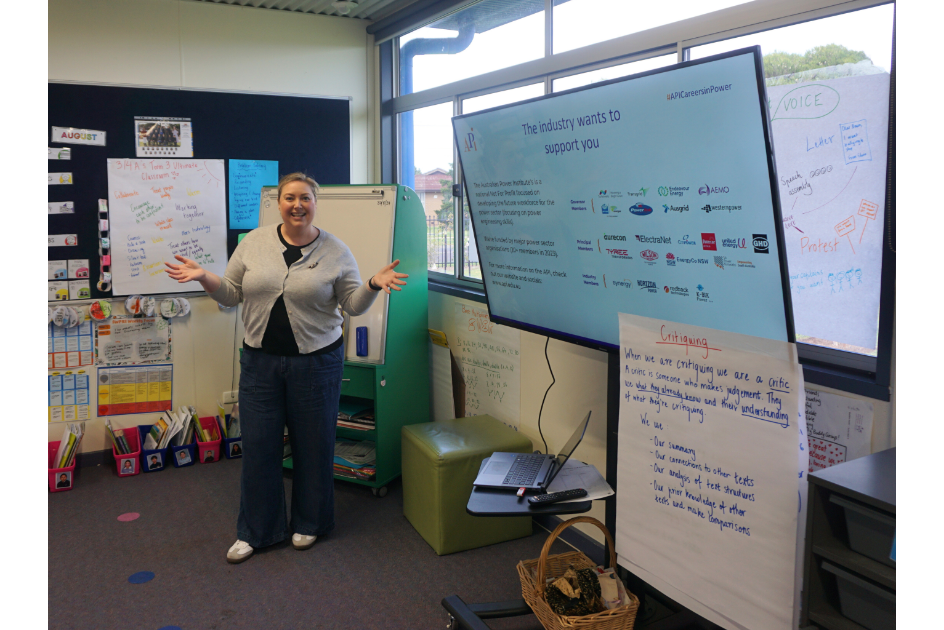Building the Future Power Workforce Together: Highlights from the API Partner Session
- David Pointing

- Apr 16
- 3 min read
Posted: 16 April 2025
On 19 February 2025, the API Board and staff brought together a diverse group of partner organisations for a dedicated session focused on shaping the future of Australia’s power sector workforce.
The event, held alongside the API Board’s strategic planning meeting, was a rare opportunity for leaders across the energy ecosystem to share their perspectives, priorities, and practical contributions to workforce development.
A Strong Ecosystem, Facing Shared Challenges
Opening the session, API Board Chair Renee Anderson reflected on the significance of the gathering:
“We know and value that we are part of a broader, successful ecosystem. The API is proud of our 20-year contribution to workforce development—but we also recognise this is a time of immense change.”
She invited partners to share their insights on three critical questions:
What is the key challenge your organisation identifies for the development of the power sector workforce?
What are you doing about it?
How could API assist with your efforts?
Insights Across the Sector
Each of the seven partner organisations provided a unique lens on the workforce development challenge, drawing from their work across industry, education, policy, and advocacy. Highlights included:
🔌 CIGRE Australia
Facing global competition for skilled professionals, CIGRE is strengthening early-career and gender diversity programs and seeks API’s partnership on national advocacy and joint events.
“The scale of the problem is beyond any one organisation—CIGRE, API or others—to solve alone.” – Ed Wilson, CIGRE Board Member
⚡ Electric Energy Society of Australia (EESA)
With a strong grassroots presence, EESA called for national coordination and shared local delivery, proposing more collaboration with API on university liaison and knowledge-sharing.
“API can be our bridge to maintain vital university links.” – Terry Lampard, EESA National President
🏗️ Energy Networks Australia (ENA)
Identifying workforce capacity and safety as top priorities, ENA is eager to support initiatives led by others, suggesting API take the lead in strategic workforce planning.
“We’d rather amplify the good work of others, like API.” – Dor San Tan, Head of Distribution Networks
🛠️ Engineers Australia (EA)
EA highlighted declining enrolments and a lack of visibility around energy careers. They proposed aligning messaging with API for school outreach and joint support for overseas-born engineers.
“If we align our messages, we might just get the cut-through.” – Susan Kreemer Pickford, Principal Engineer
🌱 Energy Efficiency Council (EEC)
EEC championed the demand-side of the workforce transition, calling for integrated planning and mutual sharing of training resources and public campaigns.
“Engineers need to understand the demand side too.” – Luke Menzel, CEO
🌬️ Clean Energy Council (CEC)
CEC shared the success of the new Grid Connection Engineer Graduate Program and sees potential for API to help expand the model and amplify graduate stories.
“These grads could speak directly to undergrads and schools—it’s inspiring and practical.” – Lauren Howard, Grid Connection Engineer Graduate Program Manager
🔍 RACE for 2030 & Institute for Sustainable Futures (UTS)
With extensive experience modelling workforce needs, ISF called on API to join a landmark project on electrification workforce planning and to help translate research into action.
“We want API involved in shaping and doing this work.” – Jay Rutovitz, Research Director for Institute for Sustainable Futures, UTS (lead researcher for RACE 2030 projects on workforce)
Key Outcomes
The session delivered a rich set of insights that directly informed the API Board’s strategic planning session the following day. Key themes included:
The urgent need for national coordination and visibility of workforce data.
A call for consistent messaging and storytelling across the sector.
Strong appetite for deeper collaboration, especially in early-career engagement, diversity, and demand-side skills.
A recognition of API’s unique position to convene, amplify, and lead.
API has committed to sharing a detailed partner session summary and will continue to work with each partner organisation to action the opportunities identified.
Looking Ahead
The partner session reaffirmed that workforce development in the power sector is a collective endeavour. As API CEO Dr David Pointing noted, “We are stronger and more impactful when we work together.”
The API extends sincere thanks to our partners for their time, insights, and ongoing collaboration. Together, we are building a smarter, more inclusive, and more capable workforce for Australia’s energy future.




Comments